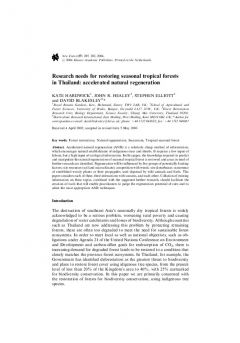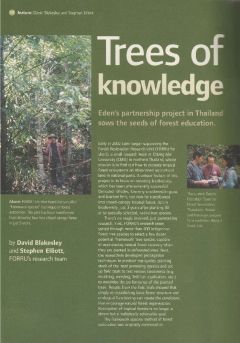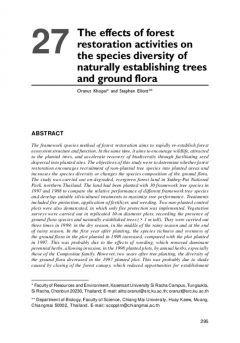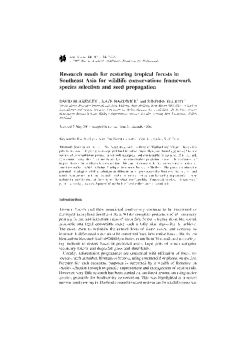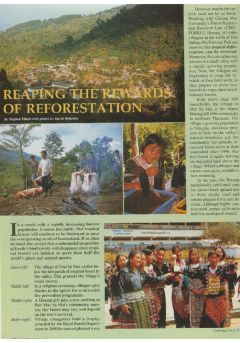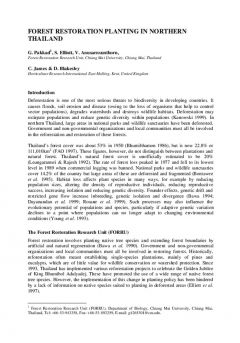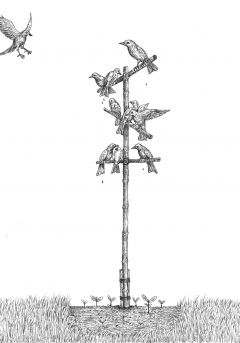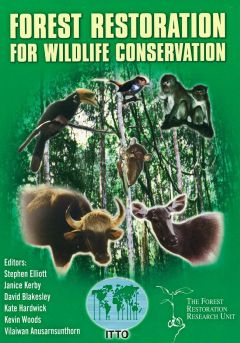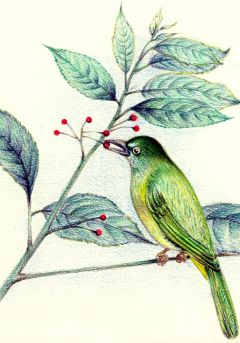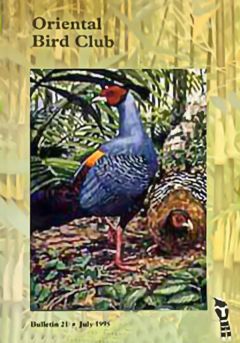Extensive study has been made by FORRU, local forestry staff and students of Wailailak University of the trees of the lowland forest in the remaining range of Gurney’s Pitta in southern Thailand, including the identity of species and their flowering and fruiting phenologies. Over 180 species of tree have been identified and reference and voucher collections made of leaves and seeds. Phenology trails have been established and over 200 trees individually labelled.
Detailed measurements of sapling growth rates have been made in the tree nursery to identify potential framework species for forest restoration, and field visits have established the identity of trees capable of regenerating in deforested areas. Three different forest restoration methods have been trialled and closely monitored at experimental plots; accelerated natural regeneration, replanting with framework species and direct seeding. All three show potential for wider forest restoration. A technical guide to forest restoration methods in the area has been produced.
Moreover, a local school curriculum “Gurney’s Pitta and Nature” was developed mainly by BCST and its partners. The curriculum aims to i) establish systematically basic learning about Gurney’s Pitta, ii) promote this subject at higher levels of education, iii) promote Gurney’s Pitta as a flagship species for conservation and iv) raise awareness of local people on Gurney’s Pitta conservation.
51: Research needs for restoring tropical forests in Southeast Asia for wildlife conservation: accelerated natural regeneration
Accelerated natural regeneration (ANR) is a relatively cheap method of reforestation, which encourages natural establishment of indigenous trees and shrubs. It requires a low input of labour, but...
52: Trees of Knowledge
Early in 2002 Eden began supporting the Forest Restoration Research Unit (FORRU for short), a small research team at Chiang Mai University (CMU) in northern Thailand, whose mission is to find out...
53: The effects of forest restoration activities on the species diversity of naturally establishing trees and ground flora
The framework species method of forest restoration aims to rapidly re-establish forest ecosystem structure and function. At the same time, it aims to encourage wildlife, attracted to the planted...
54: Research needs for restoring tropical forests in Southeast Asia for wildlife conservation: framework species selection and seed propagation
ABSTRACT: Some governments in Southeast Asia, such as those of Thailand and Vietnam, have clear policies to restore large areas of degraded land to native forest. However, knowledge needed for the...
55: Reaping the rewards of reforestation
Although rapidly growing human populations make continued tropical destruction and the accompanying loss of biodiversity seem inevitable, Hmong hill-tribe villagers in the north of Doi Suthep-Pui...
56: Forest restoration planting in northern Thailand
Deforestation is one of the most serious threats to biodiversity in developing countries. It causes floods, soil erosion and disease (owing to the loss of organisms that help to control vector...
57: The effect of artificial perches and local vegetation on bird-dispersed seed deposition into regenerating sites
ABSTRACT: Knowledge of the role of birds in natural regeneration could be used to accelerate and reduce the costs of forest restoration. This study determined: (1) whether artificial bird perches,...
58: The Chiang Mai Research Agenda for the Restoration of Degraded Forestlands for Wildlife Conservation in Southeast Asia
Back in 2000, forest restoration research was far from main stream. Deforestation was regarded as irreversible and the idea that ecologists could actually find a way to restore tropical forest...
59: The effect of artificial perches and local vegetation on bird-dispersed seed deposition into regenerating sites
ABSTRACT: Knowledge of the role of birds in natural regeneration could be used to accelerate and reduce the costs of forest restoration. The objectives of this study were to determine: (1) whether...
60: Restoring conservation forests in northern Thailand and the monitoring of frugivorous birds
During tropical forest restoration, birds play a crucial role in dispersing seeds from nearby forest into restoration sites. The framework species method of forest restoration is designed to...

